Occupations
The
Domesday book records that
Normanby included land enough for four ploughs.
During the Middle ages monasteries were largely in
control of drainage and cultivation in wetland areas. There was a
marshland grange at South Marton,
Edstone Priory, Rook Barugh
and Normanby amongst 11 in the district.
Marshland was reclaimed where higher land could be utilised. There was a
corn mill at Sinnington from medieval times.
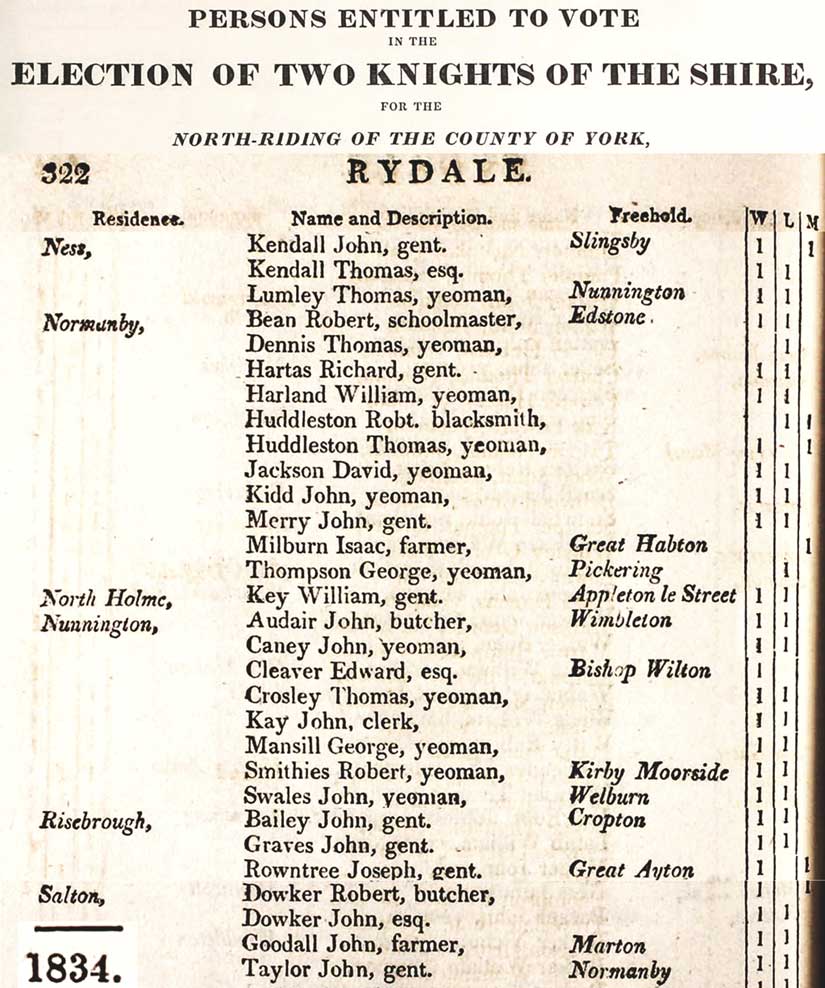
The parish registers and
census show how people's occupations have changed over the years.
In the eighteenth century
there were Yeoman farmers but also labourers, carpenters, a butcher, servants,
Waggoner, blacksmith, husbandman, publican, shopkeeper (James Hill) parish clerk and the curate.
Harvest wages in 1794 were ten pence a day for a woman and 2 shillings for a
man. By 1798 they had risen to one shilling and
threepence for women and 3 shillings for a man.

15 September 1827
In the following century
there was a tailor (Thomas Hudson), still a blacksmith (Robert
Huddlestone) publican, servants, a miller's
servant, a horse breaker (William Wilson), shopkeeper (Ralph and Jane
Boyes ).
In the early and mid 20th
century there is a roadman, cowman, motor driver,
catchment board worker, chauffeur, painter, RAF serviceman, HM forces
clerk, engineer, local government officer and quarryman.
Farming
has dominated the occupations in the village until very recently.
|
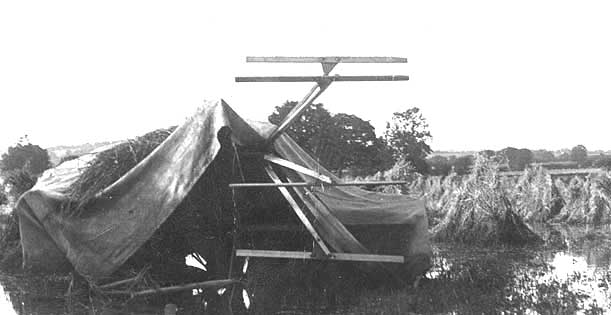
. |
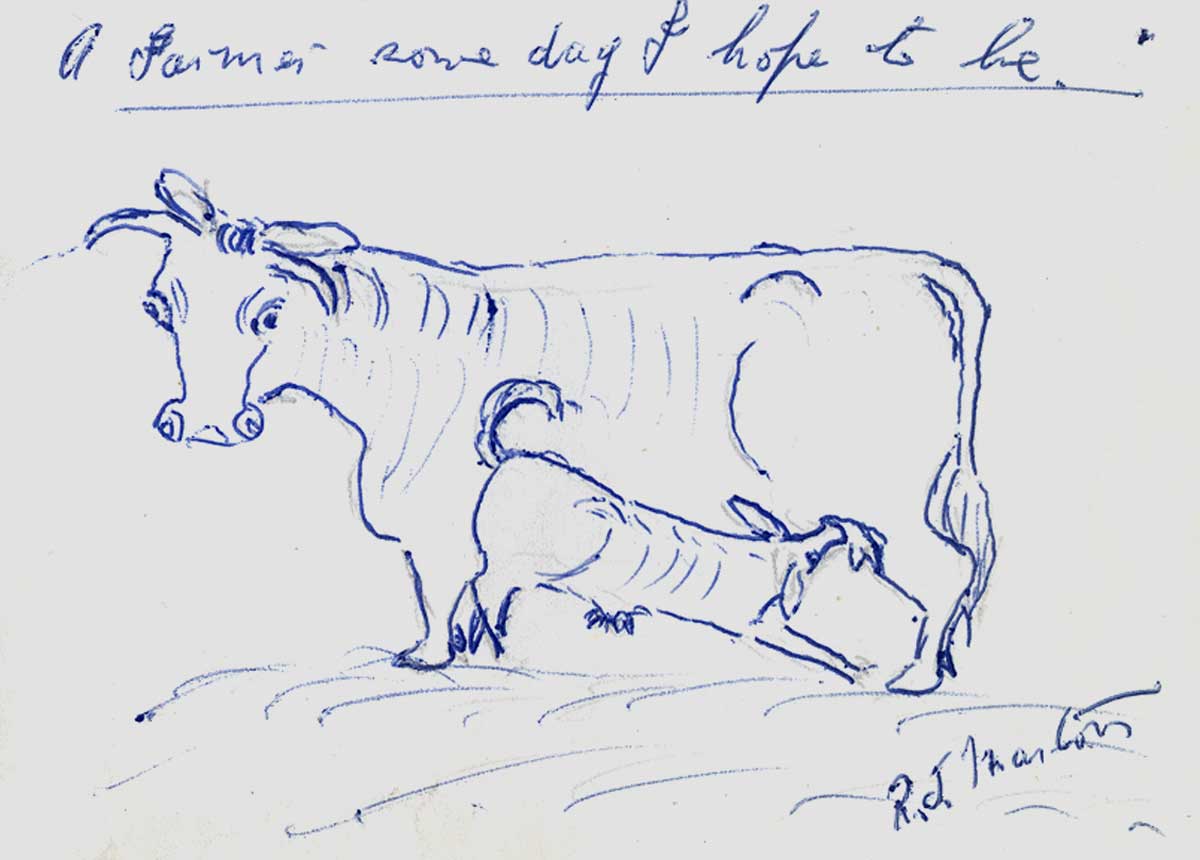 |
|
Massey Harris binder possible at
Westfield Farm. |
From
a Autograph book 2nd June 1953. |
Farming fortunes have
risen and fallen with good and bad harvests, economic slumps and booms in War
years. In the 18th and 19th century the Vale of Pickering was still
mainly grassland, much in need of drainage. Horse breeding was common.
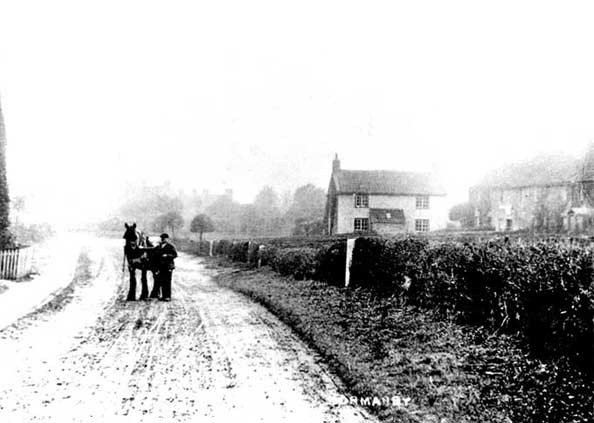
The
village carrier can be seen in this early 20th century view looking south.
The last quarter of the 19th
century was bad for farm economics. Prices eventually increased but
wages remained low. After the First World War depression hit and in the
1920s prices tumbled
In the early part of the
twentieth century a farming diary from not far away described the daily
routines. The worker rose at dawn and retired at dusk. Sunday was
largely a day for recreation when cricket or quoits might be played but
otherwise there were few breaks except for a week at
Martinmas. He earned 9 shillings a week with a bonus at harvest.
The men looked after the
cows, sheep, pigs, horses and livestock, ploughed, drilled, scuffled,
harrowed, made hay, reaped, hoed, mowed, stacked, thatched, sheared, felled
firewood, grew turnips, hay and potatoes. The women baked, churned,
washed and mended.
There was a hiring fair
in Pickering in November. Market day was Monday. Horses were used
extensively right up to the Second World War when much grassland was ploughed
up.
The
farming year was:
|
February
Ploughing
Thrashing
March
Ploughing
Thrashing
Harrowing
Winnowing oats
Collecting thorn
Drilling corn
April
Lambing
Harrowing
Rolling
Drilling
Foaling
Planting potatoes
|
May
Ploughing
Harrowing
Drilling
June
Sheep shearing
Ploughing
Stooking
corn
Scruffling
Hand hoeing turnips
July
Sheep
dipping
Ploughing
Rolling
Harrowing
Scruffling
Hay-turning
Cocking
Carting
|
August
Scruffling
Cutting
and carting bracken
Thatching
hay cocks
Mowing
thistles
Harvesting
September
Cutting
oats
Cutting
corn
Binding
Staking
Raking
Thrashing
Mending
hedges
Potato
picking
Thatching
stacks |
October
Sheep
dipping
Carting
manure
Ploughing
Sowing
wheat
November
Carting
slag for road mending
Pulping
and chopping turnips
December
Ploughing
Pulling
turnips
Pulping
animal food
Thrashing
Setting
nets for sheep pens |
|
|

|
|
Rise Farm sale 1880
|
|

|
|
Rise Farm sale 1880
|
|

|
|
Rise Farm sale 1880
|
|
|
The map refers to the present day farm "The Rise"
the area was called Low Bottoms because of the low lying land.
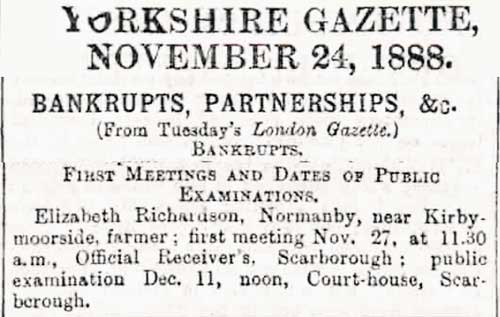
The Parish Register
The parish register of recent years indicates a variety of occupations worlds
apart from the village of 1900. They include council clerks, accountant,
micro-biologist, lecturer, teacher, surveyor, feed salesman, builder, water
board worker, farrier, charity worker, plumber, company director. The range is
a testimony to the vastly increased mobility, opportunities, new occupations
and educational standards of the present day.
Top